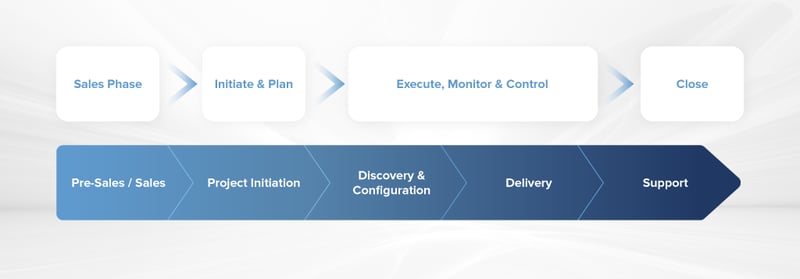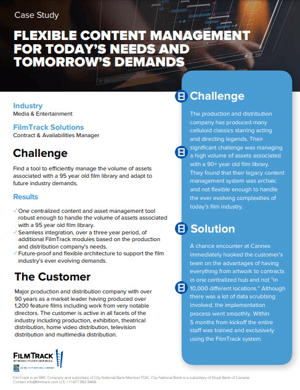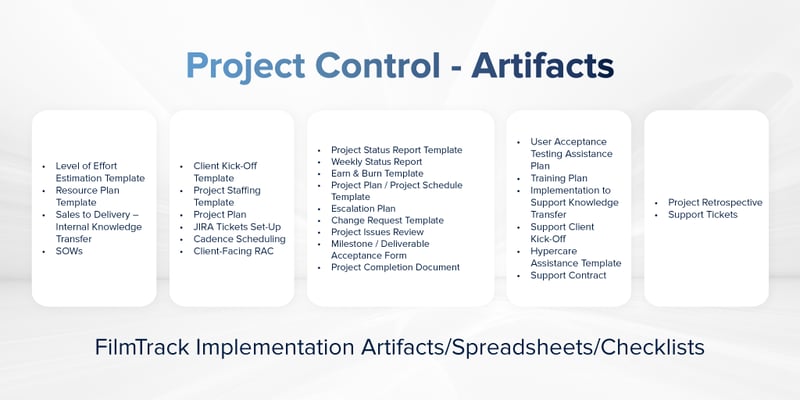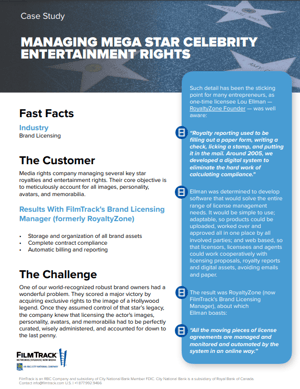In its simplest form, rights management is overseeing the content you have acquired or sold, and monetizing it. However, the evolution of global distribution and more recent digital trends have disrupted this fundamental simplicity in multiple ways, requiring more robust rights management solutions.
Complications include:
- It is now typical to sell a title's rights to multiple buyers over a period of time worldwide in various formats, encompassing a host of variables such as territory rights, language, currency, etc.
- There is now an abundance of digital channels, vendors, formats, and product bundles to sell to that are all trying to provide the flexibility demanded by digital consumers.
- More complex deals are the new norm due to restrictions, exclusions, window periods, expirations, and multiple participants.
- Subscription models now challenge the flexibility of legacy systems designed exclusively for simplistic Rights In/Rights Out deals.
- There is more of a need to license and administer diverse, global rights from a single source or platform.
- Media companies are experiencing an increase in transaction volumes as the scope and granularity of content become more advanced, requiring ready access to granular data below the title level (i.e., segments, episodes, clips, etc.).
Media companies face many challenges when managing royalties and rights, including the importance of effective software implementation and project management, critical to business continuity.
Here we highlight the critical role of a holistic project management approach in ensuring the successful implementation of rights management solutions like FilmTrack.
Challenges Implementing Software to Manage Royalties and Rights
Out-of-the-Box Solutions Can Fail Without a Proper Implementation Methodology
Effectively managing royalties and rights requires a holistic approach that includes:
- Efficient systems
- Accurate data management
- Observance of contractual obligations
- Transparent and timely processing
- Healthy business relationships that support the rights and interests of all involved
However, many rights management vendors rely on product specialists–with expertise only on their specific solution–to implement their products according to a basic set of requirements. Without a formal process for change management and requirements gathering, they often hand off implementation to another department or even third parties, where a severe disconnect can result in a failed implementation due to an inability to meet unique customer needs.
In these cases, many unforeseen issues that nobody considered beforehand often surface (particularly in large-scale implementations), leading to dreaded scope creep and customers complaining that:
- We forgot to plan for X.
- We wanted something different.
- We can’t possibly go live without X.
Scope creep can increase the cost and complexity of projects and extend the timeline required to go live.
“Without a strong commitment to what we call 'business process transformation' (vs. 'product implementation'), you open Pandora's box. Software implementation becomes this untenable, hyper-complex project that no one thought it would be. — We conduct a thorough client discovery process before putting pen to paper and implementing our rights management software. And the same discovery team sees the project through to the very end, ensuring vital client objectives are met. We use detailed checklists to ensure we understand the nuances of a client's business and configure tools to give them exactly what they need. We essentially leave no stone unturned.”
 Michael McGuire
FilmTrack
COO
Michael McGuire
FilmTrack
COO
For FilmTrack, software implementation is a part of the sales phase. A cohesive relationship between vendor and customer begins with the pre-sales process and continues well after the solution goes live. The process, which results in far superior outcomes for individual customers and their unique business needs, looks something like this:

Product Implementation vs. Business Process Transformation
Many vendors in the Rights & Royalties Management industry have product experts who stand up an out-of-the-box platform and then move their customer on to a support team.
In contrast, FilmTrack has a full project management office that looks holistically at projects to avoid data loss and wasted time and resources. This means thoroughly understanding the customer's existing technology and required integrations involved.
Our entire methodology for managing this process requires "artifacts", or elaborate spreadsheets and checklists, that inform and update our implementation team throughout the process. Our ability to look at projects holistically and not just focus on standing our system up typically results in more successful outcomes and widespread user adoption.
Evaluating a Vendor's Integration and Orchestration of Rights Management Software
Although most businesses evaluate software vendors based on how adept their solution is at solving their challenges, many don't spend nearly as much time assessing a vendor’s implementation methodology, which, if not comprehensive, can be a significant risk area. Here are some critical points to consider:
- What is their implementation methodology?
- Do they have a standard practice for getting their platform up and live?
- Do they understand how to uncover all of the actual needs of the business outside of just what is perceived during the evaluation?
- How much emphasis do they place on integration and orchestration?
- Will all this time and money obtain a solid solution or just another product?
- Does the vendor have significant technical and industry experience to anticipate issues or value adds you do not establish?
- Have you evaluated the vendor's track record through customer testimonials or interviews?
Taking the time to assess these critical points reduces implementation risks, ensures the software will align with your business needs, maximizes ROI, promotes efficient operations, and supports long-term scalability and end user satisfaction.
FilmTrack's Approach to Implementation and Project Management
FilmTrack takes a holistic approach with project management, from pre-sale through continued end user training. Our pre-sales process, which gets underway before the software is even sold, involves a series of critical activities, including:
- Pinpointing the best solution for the client
- Coordinating leadership and assistance from the pre-sales engineering team
- Deciding how implementation will proceed
- Outlining the scope of the project
- Calculating the cost and defining the timeline
- Setting client expectations and estimating level of effort required
After a new client signs the contract, the pre-sales engineering team collaborates with the implementation team to configure the rights management solution. A solution is identified based on the client discovery process, and the team moves forward with the configuration and setup of the product, user training, and go-live preparations.
“We don't need to reinvent the wheel when engaging in a new project. We have a project management office driven by decades of insight on software implementations and our ongoing experience with implementing for our varied client base in the entertainment and media industry. We cater to many types—from behemoth enterprises to boutique media companies with as little as 20+ titles in their catalogs. — We are very proud of our evolving internal tools and processes and they help us give our customers what they need for their unique business uses and, perhaps even more importantly, help their teams adopt and use the system."
 Wagner Palmiere
FilmTrack
SVP, Solution Implementation & Delivery
Wagner Palmiere
FilmTrack
SVP, Solution Implementation & Delivery
Data Migration
Data migration is a significant aspect of implementation – particularly when clients shift from legacy systems which can be homegrown, dated client server infrastructure or previously failed Rights Management implementations – and is unique to each customer. One critical feature of this industry is that each client handles its business of rights and finance management (royalties, participation, avails) in various and nuanced ways.
Conversely, if you work in manufacturing, you could be talking to Nissan or Volkswagen and find they conduct business very similarly. But for companies in media and entertainment, asset value determinations on content are intangible. Content and assets are highly variable based on how enthusiastic the market is for it at the time as well as a multitude of other factors. This results in each production company, studio, or channel approaching its rights management process differently.
In the business world, players like SAP and Oracle dominate the market. However, this is not true for entertainment businesses that buy, sell, manage, and pay completely differently among all the players, from studio to studio, production house to production house, region to region, language to language, and country to country. Software that can handle those complexities must be extremely robust, highly configurable, and feature a thorough implementation team that is well-versed in configuring unique business realities and needs into a solution that works for media companies.
Benefits of a Holistic Approach
“If you aren't evaluating the implementation methodology and approach as thoroughly as you're evaluating the feature function capabilities of a solution, you're almost destined to fail.”
A holistic approach is based on a set of fundamental, scripted practices derived from the knowledge acquired through years of experience and typically focuses on three objectives:
- A well-defined roadmap. A checklist, set of bullet points, or methodologies that help establish and move the project forward.
- Transparency for all. Clear visibility of all aspects of the project for management, the client, and the vendor.
- Accurate pricing. It’s not just what you pay for the software. It’s the evaluation, implementation, staffing, reputational cost, etc.
Without a holistic approach that identifies all the necessary practices and ensures that end users understand the benefits upfront, a company could easily spend two or three years on an implementation project destined to fail, leaving them having to start over or return to the systems that weren't working previously. However, when the implementation team is involved in scope gathering, estimation, pricing, delivery, implementation, and support, a seamless experience is achieved.
“FilmTrack understands the details and translates that knowledge into products, features, functionalities, and services required for implementation. This process and capability to understand each client’s unique set of needs is one of FilmTrack’s strongest points of differentiation in the market.”
FilmTrack in Action
Below you'll find two case studies that highlight the experiences media companies have had from our holistic approach to project implementation and management:
CASE STUDY: FLEXIBLE CONTENT MANAGEMENT
THE CLIENT: A major enterprise production and distribution company that has produced many celluloid classics featuring acting and directing legends.
THE CHALLENGE: They struggled to manage a massive, 90-year-old film library with a legacy content management system that lacked the flexibility to handle the ever-evolving complexities of today’s film industry. They had everything from artwork to contracts “in 10,000 different locations” that needed to be pulled into a centralized hub - major data scrubbing was required to ensure a smooth implementation.
THE RESULT: Within five months from kickoff, the entire staff was trained and using the FilmTrack system exclusively. FilmTrack’s cloud-based solution, which enabled real-time access to customers’ data from anywhere at any time, led to a dramatic productivity boost and the ability to seamlessly add products to their platform.
THE TAKEAWAY: The primary reason for the customer's smooth integration was that FilmTrack took the time to get to know the customer and their needs. FilmTrack’s deep knowledge of the customer and insight into the nuances of film distribution enabled them to deliver an efficient system that dramatically increased productivity.
CASE STUDY: MANAGING CELEBRITY RIGHTS
THE CLIENT: Media company with a huge library of assets, including internationally recognized assets that receive up to 150 rights usage requests every day.
THE CHALLENGE: The company required a superior method to account for all images, personality, avatars, and memorabilia. Additionally, they acquired exclusive rights to the image of a Hollywood legend and needed all associated licensing to be perfectly curated, wisely administered, and accounted for down to the last penny.
THE RESULT: Worldwide third-party licensees clamoring for the star's image gained ready access to an extensive photo library from one central digital location. FilmTrack also facilitated the media company’s ability to confirm users’ authorization and ensure that they conformed to the images’ approved purposes.
THE TAKEAWAY: With FilmTrack's robust platform, insight, and care, the media company is set up to rapidly work through the approval process for hundreds of daily rights requests.
Simplifying Rights Management Software Implementation
Here’s the reality: you can have the best software on the market, with amazing features and functionalities, but if end-user adoption is poor, the solution will fail. Adoption begins when the end user understands a solution's value – they need to perceive that the software will not disrupt their work but will help them.
One of the biggest mistakes a media company can make when procuring a software solution is going for what appears to be less expensive. During decision-making, businesses often consider a solution’s price as the ultimate variable that drives their decision. However, cost is highly relative - you may spend less upfront, but a solution might not meet your company’s needs, and you will need to spend more to remediate those shortcomings.
One critical consideration when deciding if a vendor will implement effectively and contain costs is ensuring there is a strong change management methodology in place:
"Suppose a new client has been using the same legacy system to manage rights since 1997— for the last 25 years their employees will have been using that system every single day for decades! At that point, bringing in new software is like breaking up a marriage. Even if the incoming solution is perfect, you require an approach during the implementation that leads to adoption. New users must believe in the new system–that it is better and worth the time and effort to learn to use it effectively. — The vendor, in this case, FilmTrack, needs to employ a lot of patience and empathy with what the customer is going through - they need leadership and support through a difficult time. It's not just a matter of software engineering. There is a required investment into the relationship with the end user so that adoption will be strong. That’s where FilmTrack excels."
To ensure trust, customers must look to the implementation and project management experiences of a vendor’s current clients and ask the following questions regarding their observations:
- Were there a lot of surprises during implementation?
- Were the costs significantly higher than anticipated?
- What efforts did the vendor take to understand customer needs?
- Did the solution align with business goals?
- Was business continuity achieved?
- Were handoffs between teams smooth and well-organized?
- Was overall risk reduced?
“There's a vast difference between selling a product and having a relationship. Our goal is to have people utilize our system for 20 plus years and love it because it makes their daily processes easier. — There's a huge difference between a company set up to sell, implement, support, and develop a long-term relationship surrounding a product and someone who sells you a system, installs it, and walks away.”
FilmTrack devotes an extended amount of time to the pre-sales discovery process to ensure our solution will work for each individual customer. With a remarkable track record, an enterprise strategy for streamlining implementation, and bank-level security derived from our affiliation with City National Bank – FilmTrack stands as a global company adhering to world-class standards. We don’t have customers; we have partners. If your organization is looking for a holistic approach to software implementation and project management, request a demo to learn more about FilmTrack’s low-risk, high-value rights management solution today.
*This article is for general information and education only. It is provided as a courtesy to the clients and friends of FilmTrack. FilmTrack does not warrant the information contained in this article (other than factual information relating to FilmTrack) is accurate or complete. Opinions expressed and estimates or projections given are those of the author or persons quoted as of the date of the article with no obligation to update or notify of inaccuracy or change.
* All trademarks and service marks are property of the respective owners.



